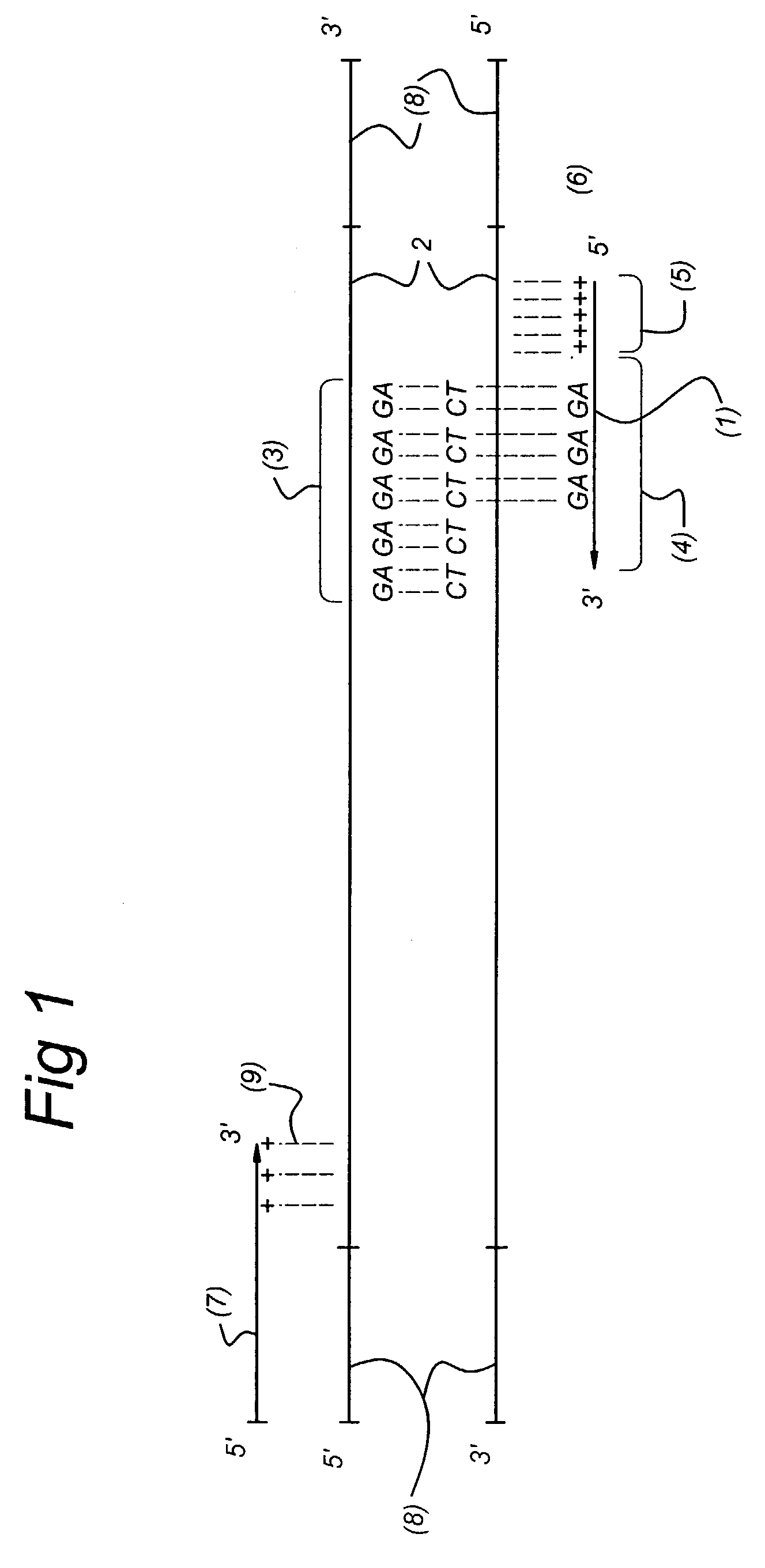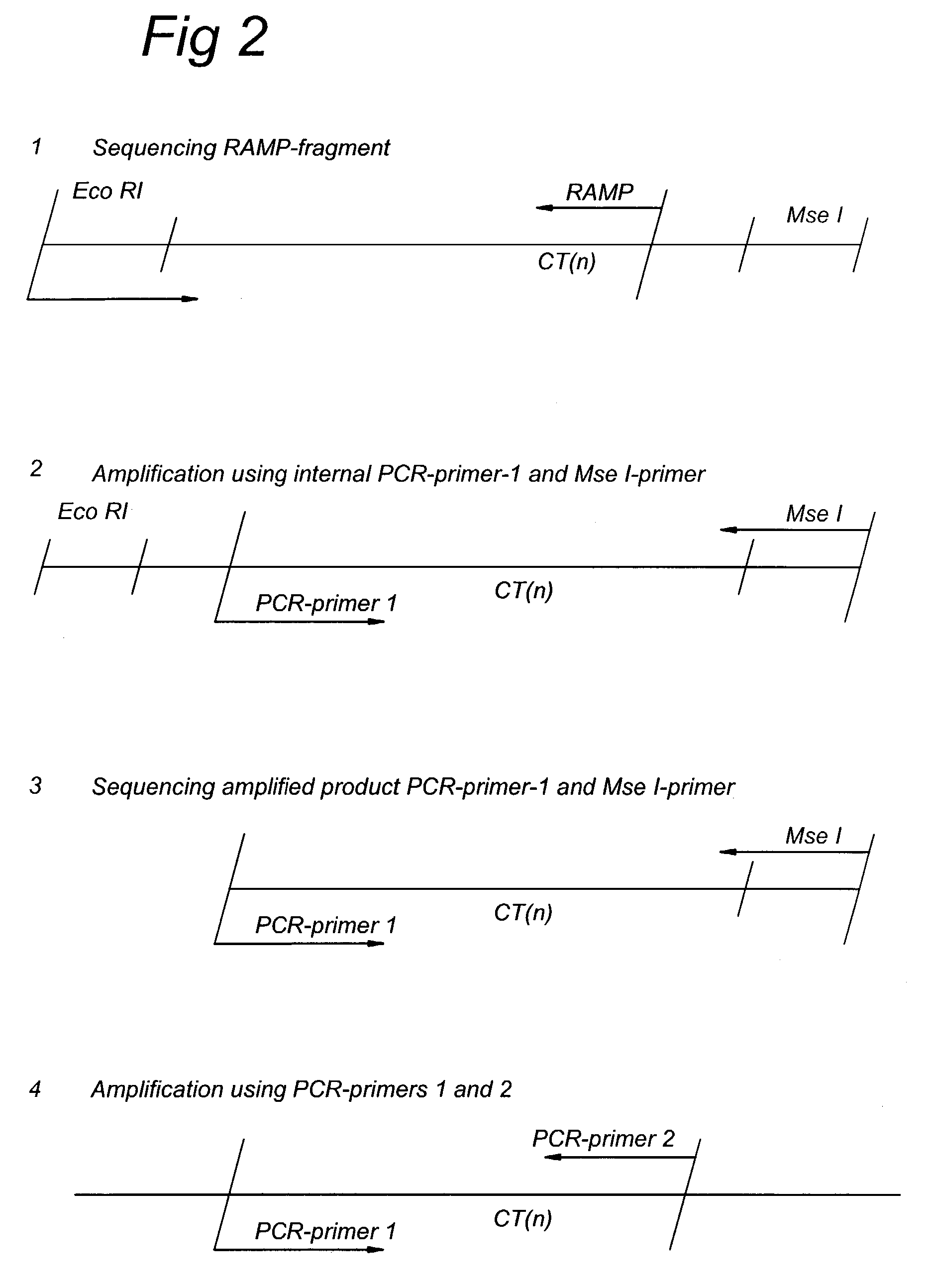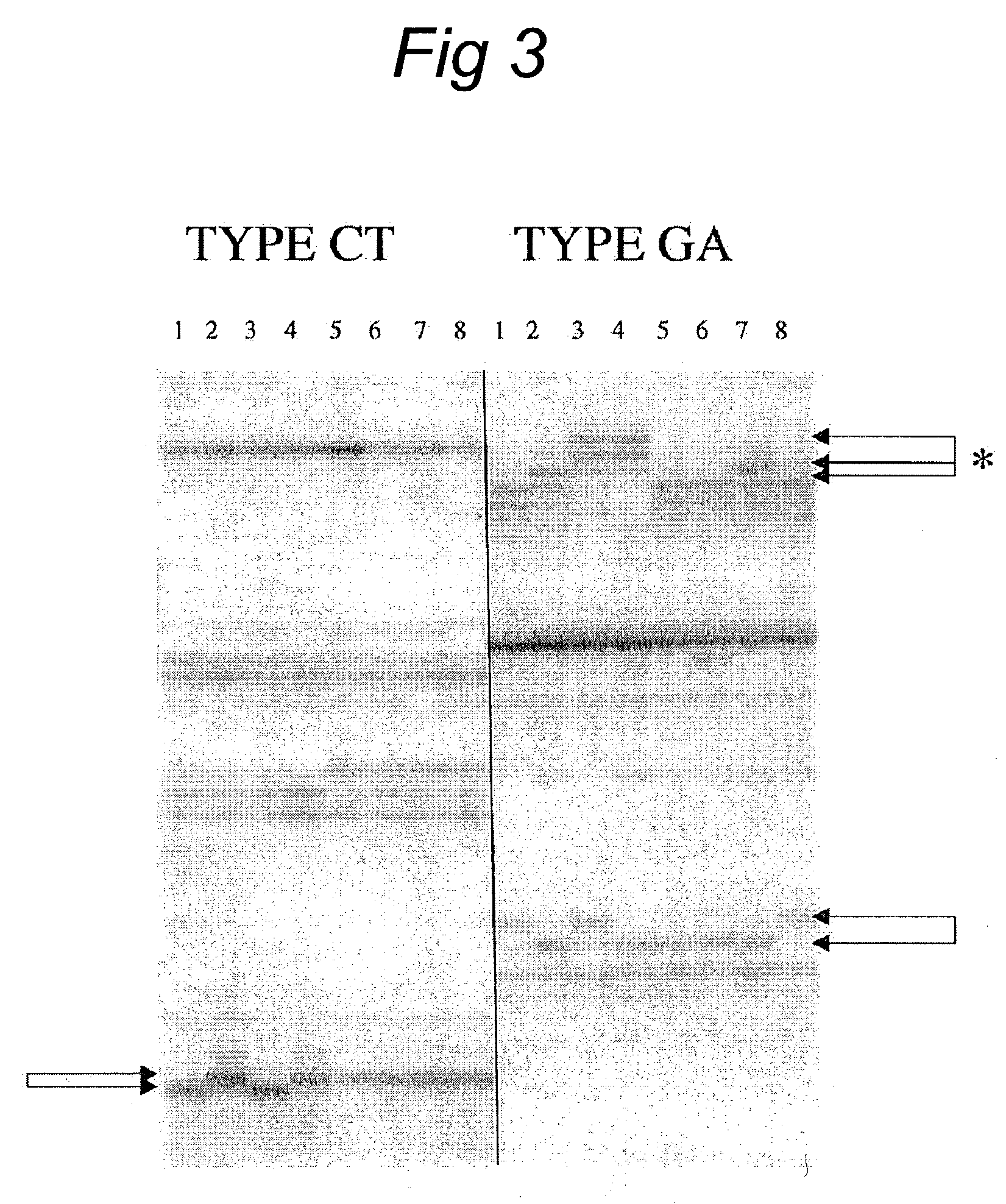Methods and kits comprising AFLP primers, and ramp primers with a part complementary to a compound microsatellite repeat and an anchor part complementary to nucleotides adjacent to the repeat
a technology of compound microsatellite repeats and primers, which is applied in the field of identifying and analysing nucleic acid sequences, can solve the problems of inability to analyse nucleic acid sequences for polymorphisms/markers associated with particular sequences such as highly polymorphic microsatellites
- Summary
- Abstract
- Description
- Claims
- Application Information
AI Technical Summary
Benefits of technology
Problems solved by technology
Method used
Image
Examples
example 1
Targeting of Microsatellite Repeat Polymorphisms in Lettuce Using the Combination of an AFLP Primer and a RAMP Primer
1. Description of Biological Materials
[0122]The biological materials used are lettuce lines Rachel, Vicky, Lianne, Quincy, Thirza, Veraly, Clarion and Ballora.
2. TaqI / MseI AFLP Template Preparation, Pre-amplification and Amplification Using a Selective TaqI AFLP Primer in Combination with a RAMP Primer
[0123]AFLP templates prepared using the restriction enzymes TaqI and MseI, and pre-amplification reactions were carried out according to standard procedures described by Vos et al., (Nucleic Acids Research 23: no 21, pp. 4407–4414, 1995; and patent application EP0534858).
[0124]Microsatellite-repeat fragment-enriched fingerprints patterns were obtained by carrying out a selective amplification from a 20-fold diluted +0 / +0 pre-amplification mixture using the combination of a TaqI AFLP selective +3 AFLP primer and a RAMP primer. The amplification reactions were carried out ...
example 2
Targeting of Potential Microsatellite Repeat Polymorphisms in Pickle Using the Combination of an AFLP Primer and a RAMP Primer
1. Description of Biological Materials
[0138]The biological materials used are the parental lines and six F2 progeny of a pickle mapping population. The parental lines are G421 (indicated by P1 in FIG. 4) and H19 (indicated by P2 in FIG. 4). The F2 progeny used are numbered 001, 002, 003, 004, 005 and 006.
2. EcoRI / MseI Template Preparation and Amplification Using a Selective EcoRI Primers in Combination with a RAMP Primer.
[0139]AFLP templates prepared using the restriction enzymes EcoRI and MseI and pre-amplification reactions were carried out as described in Example 1 or references incorporated therein. Microsatellite-repeat fragment-enriched fingerprints patterns were obtained by carrying out a selective amplification from 20-fold diluted +0 / +0 pre-amplification mixture using the combination of an EcoRI AFLP selective +1 AFLP primer and a RAMP primer. The am...
example 3
Targeting of Microsatellite Repeat Polymorphisms in Maize Using the Combination of an AFLP Primer and a RAMP Primer
1. Description of Biological Materials
[0152]The biological materials used are the parental lines and 32 F2 progeny of maize mapping population. The parental lines are A7 (indicated by PI in FIG. 5) and B73 (indicated by P2 in FIG. 5). The F2 progeny used are numbered 001–032.
2. PstI / MseI AFLP Template Preparation, Pre-amplification and Amplification Using a Selective PstI Primer in Combination with a RAMP Primer.
[0153]AFLP templates prepared using the restriction enzymes PstI and MseI and pre-amplification reactions were carried out as described in Example 1 or references incorporated therein. Microsatellite-repeat fragment-enriched fingerprints patterns were obtained by carrying out a selective amplification from 20-fold diluted +0 / +0 pre-amplification mixture using the combination of a PstI AFLP selective +2 AFLP primer and a RAMP primer. The amplification reactions w...
PUM
| Property | Measurement | Unit |
|---|---|---|
| pH | aaaaa | aaaaa |
| pH | aaaaa | aaaaa |
| length | aaaaa | aaaaa |
Abstract
Description
Claims
Application Information
 Login to View More
Login to View More - R&D
- Intellectual Property
- Life Sciences
- Materials
- Tech Scout
- Unparalleled Data Quality
- Higher Quality Content
- 60% Fewer Hallucinations
Browse by: Latest US Patents, China's latest patents, Technical Efficacy Thesaurus, Application Domain, Technology Topic, Popular Technical Reports.
© 2025 PatSnap. All rights reserved.Legal|Privacy policy|Modern Slavery Act Transparency Statement|Sitemap|About US| Contact US: help@patsnap.com



